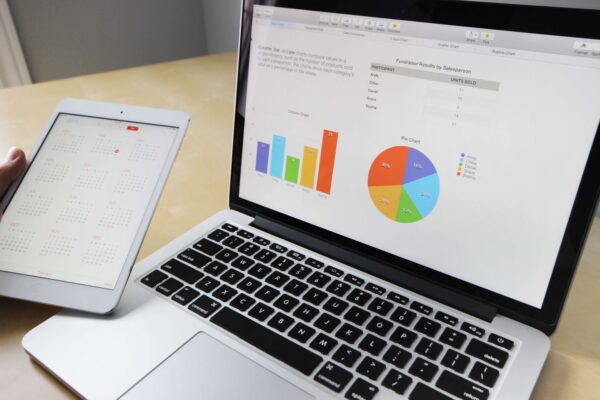
In today’s fast-paced digital landscape, measuring the success of your marketing efforts is crucial. Businesses invest significant resources in digital marketing campaigns, and it’s essential to know whether these investments are paying off. Key Performance Indicators (KPIs) and metrics play a pivotal role in evaluating the effectiveness of your digital marketing strategies. In this article, we will delve into the world of digital marketing analytics, exploring the most relevant KPIs and metrics that matter for your business.
Introduction
In the digital age, businesses rely heavily on their online presence to reach their target audience. As the competition intensifies, it becomes imperative to gauge the effectiveness of your digital marketing efforts. This article will guide you through the world of Key Performance Indicators (KPIs) and metrics, helping you decipher what truly matters in your quest to measure digital marketing success.
Defining KPIs and Metrics
Before diving into the specific metrics, let’s distinguish between KPIs and metrics. While the terms are often used interchangeably, they serve different purposes. KPIs are the critical indicators that align with your business goals. Metrics, on the other hand, are the quantitative data points that provide insights into your KPIs.
Selecting the right KPIs is crucial because they direct your focus toward what truly matters for your business. For instance, if your goal is to increase online sales, metrics like conversion rate and cart abandonment rate become relevant KPIs to track.
Website Traffic Metrics
Your website is often the first point of contact between your business and potential customers. Understanding how users interact with your website is fundamental. Key website traffic metrics include:
- Analyzing website visits: Track the number of visitors to your site, both new and returning. A consistent increase in visitors is a positive sign.
- Bounce rate and its significance: A high bounce rate indicates that visitors are leaving your site quickly. Understanding why this happens is essential.
- Click-through rate (CTR) and its role: For marketing campaigns, CTR measures the effectiveness of your call-to-action. A higher CTR implies a more compelling message.
Conversion Rate Optimization (CRO) Metrics
Conversions are the ultimate goal of most digital marketing efforts. CRO metrics help you assess how well your website and marketing campaigns convert visitors into customers. Key CRO metrics include:
- Understanding conversion rates: This is the percentage of visitors who take a desired action, such as making a purchase or signing up for a newsletter.
- The importance of tracking conversion funnels: Analyze the steps that lead to conversions to identify potential bottlenecks.
- A/B testing for CRO: Experiment with different elements of your website or marketing materials to improve conversion rates.
Social Media Engagement Metrics
Social media platforms offer a wealth of data to measure your digital marketing success. Engaging with your audience on these platforms can significantly impact your brand. Relevant social media metrics include:
- Measuring social media success: Look at engagement metrics such as likes, shares, and comments to gauge your content’s impact.
- Follower growth and its impact: A steadily increasing number of followers indicates a growing audience that is interested in your brand.
Email Marketing Metrics
Email marketing remains a powerful tool for digital marketers. Metrics related to your email campaigns include:
- Open rates and click-through rates: These metrics indicate how engaging your email content is.
- Unsubscribe rates and list growth: Monitor the health of your email list by tracking unsubscribes and new subscribers.
- Email ROI and its calculation: Calculate the return on investment from your email marketing efforts.
Content Marketing Metrics
Content is at the heart of digital marketing. To measure its effectiveness, consider metrics such as:
- Assessing the effectiveness of your content: Look at pageviews and time on page to gauge user engagement.
- Content engagement metrics: Analyze social shares, comments, and backlinks to understand how well your content resonates with your audience.
SEO Performance Metrics
Search engine optimization (SEO) is crucial for organic traffic growth. Key SEO metrics include:
- Ranking on search engines: Monitor your website’s position on search engine results pages (SERPs).
- Organic traffic and its growth: Observe the trends in organic traffic to assess the effectiveness of your SEO efforts.
- Backlink analysis: Evaluate the quality and quantity of backlinks pointing to your site.
Pay-Per-Click (PPC) Advertising Metrics
For businesses investing in PPC advertising, the following metrics are essential:
- Evaluating PPC campaigns: Track click-through rates (CTR) and conversion rates to optimize your ad spend.
- Cost per click (CPC) and return on ad spend (ROAS): These metrics help you understand the cost-effectiveness of your PPC campaigns.
Customer Acquisition Cost (CAC)
Understanding the cost of acquiring new customers is critical for sustainable growth. Key points related to CAC include:
- Calculating CAC: Determine the resources expended to acquire a new customer.
- How it relates to digital marketing success: Lowering CAC can improve overall profitability.
- Strategies to reduce CAC: Explore methods to make customer acquisition more efficient.
Customer Lifetime Value (CLV)
The CLV metric is a measure of how valuable a customer is to your business over time. It involves:
- Understanding CLV: Know the long-term value of your customers.
- How CLV impacts marketing strategies: Tailor your marketing efforts to maximize CLV.
- Increasing CLV through effective marketing: Use data to improve customer retention and upselling.
Measuring Brand Awareness
In the digital realm, brand recognition is vital. Relevant metrics include:
- Brand mentions and sentiment analysis: Monitor online mentions and assess the sentiment around your brand.
- Tracking brand recognition: Measure how well your audience recognizes and identifies with your brand.
- Using metrics to enhance brand perception: Use insights to refine your brand’s image and messaging.
The Role of Data Visualization
Data can be overwhelming, but visualization makes it more accessible. Consider:
- Making data more understandable: Use charts, graphs, and dashboards to present data effectively.
- Tools for data visualization: Explore various tools and platforms for creating informative visuals.
- Creating insightful reports: Develop reports that convey actionable insights from your data.
Continuous Improvement and Adaptation
Digital marketing is an iterative process. Use data to guide your decisions and:
- The iterative nature of digital marketing: Understand that strategies need to evolve.
- Using data to refine strategies: Regularly analyze data to identify areas for improvement.
- Staying ahead in a dynamic digital landscape: Be agile and adapt to changes in the digital ecosystem.
Conclusion
Measuring digital marketing success is essential for optimizing your strategies and maximizing your return on investment. By monitoring the right KPIs and metrics, you can make informed decisions that lead to better outcomes. Embrace data-driven marketing, and watch your digital presence thrive.




